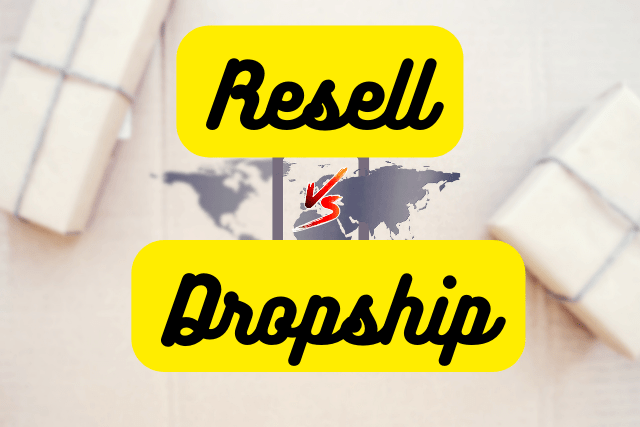Dropshipping and drop servicing offer unique opportunities for entrepreneurs looking to start an online business with minimal upfront costs.
Dropshipping involves selling physical products online, where suppliers handle inventory and shipping, making it ideal for those wanting to venture into e-commerce without significant investment.
In contrast, drop servicing focuses on selling digital services, such as graphic design or content writing, which are outsourced to freelancers. This approach requires strong client management and project coordination skills.
Both models eliminate the need for inventory, but each has its own set of challenges and benefits. Understanding your strengths, interests, and market demand can help you choose the right business model for your entrepreneurial journey.
Understanding the Business Models
Choosing the right business model is crucial to your success as an entrepreneur. Let’s explore two popular options: dropshipping and drop servicing. Both come with their unique advantages and challenges, and understanding how they work can help you make an informed decision.
How Dropshipping Works
In dropshipping, you sell products without keeping inventory on hand. Here’s a simplified breakdown of how it works:
- You set up an online store.
- Customers place orders on your website.
- You forward these orders to a supplier.
- The supplier ships the products directly to the customers.
This model eliminates the need for storage space and inventory management. You also don’t have to handle the shipping process. Dropshipping is a low-risk way to start an e-commerce business. However, success in dropshipping largely depends on finding reliable suppliers and effectively marketing your store.
How Drop Servicing Works
Drop servicing operates similarly to dropshipping but involves services instead of products. Here’s how it works:
- You create a website offering various services.
- Clients hire you to perform these services.
- You outsource the work to freelancers or agencies.
- The freelancers complete the work, and you deliver it to your clients.
With drop servicing, your focus shifts to marketing and client relationships rather than service delivery. You don’t need to be an expert in the services you offer; your primary role is to manage the workflow and ensure quality. Finding skilled freelancers is crucial for maintaining a good reputation and achieving success.
Both dropshipping and drop servicing provide unique opportunities depending on your skills, interests, and resources. Whichever model you choose, focus on building a strong brand and providing excellent customer service.
Start-up Costs: Dropshipping vs. Drop Servicing
Before starting a dropshipping or drop servicing business, understanding the start-up costs is essential. Both models have unique expenses, and knowing these costs will help you make a more informed decision.
Initial Investment for Dropshipping
Dropshipping requires several initial investments. Here’s a breakdown of typical start-up costs:
- Website and Hosting: Approximately $30 per month.
- Domain Name: Around $10 annually.
- Marketing and Advertising: Varies, usually starting at $100.
- Inventory Management Tools: About $20 per month.
- Payment Processing Fees: 2-3% per transaction.
To sum up, you might need around $200-$300 to get started with dropshipping, including setting up your store and initial marketing efforts.
Initial Investment for Drop Servicing
Drop servicing has different initial investments. Here’s a breakdown of the typical start-up costs:
- Website and Hosting: Around $30 per month.
- Domain Name: Approximately $10 annually.
- Marketing and Advertising: Varies, typically starting at $100.
- Freelancer Payments: Depends on services offered, generally starts at $50.
- Project Management Tools: About $20 per month.
In total, you might need around $200-$400 to start with drop servicing, covering platform setup and initial freelancer payments.
Both models require a modest initial investment. Choosing the right one depends on your skills, interests, and long-term business goals.
Profit Margins: Which Model is More Lucrative?
Understanding profit margins is crucial when deciding between dropshipping and drop servicing. Profit margins help you determine which business model is more lucrative. Let’s examine how earnings look in both models.
Earnings in Dropshipping
Dropshipping involves selling physical products without holding inventory. Your profit margin depends on the difference between the product’s retail price and its wholesale cost. Here’s a simple example:
- Product Cost: $20
- Retail Price: $50
- Profit Margin: $30
Other factors like shipping fees and marketing costs can impact your profits. Typically, dropshipping profit margins range from 10% to 30%. Because of the lower margins, achieving significant profits often requires a high sales volume.
Earnings in Drop Servicing
Drop servicing focuses on selling services rather than physical products. You act as a middleman, contracting the work to freelancers or agencies. Here’s an example of how earnings can look:
- Service Cost: $100
- Client Price: $300
- Profit Margin: $200
Drop servicing generally offers higher profit margins, often between 50% and 70%. You have more control over pricing and less overhead, which can lead to higher profitability.
| Business Model | Typical Profit Margin |
|---|---|
| Dropshipping | 10% – 30% |
| Drop Servicing | 50% – 70% |
In summary, drop servicing tends to offer higher profit margins than dropshipping, making it a more attractive option for those aiming for higher earnings.
Operational Challenges: Dropshipping vs. Drop Servicing
Both dropshipping and drop servicing come with unique operational challenges. These challenges can affect your business’s profitability and efficiency. Understanding these challenges can help you make an informed decision. Let’s delve into the operational issues of both models.
Issues in Dropshipping
Dropshipping has a straightforward business model, but it also presents several operational hurdles:
- Inventory Management: You rely on suppliers for stock, which can lead to out-of-stock problems.
- Shipping Delays: Shipping times are often out of your control, potentially leading to dissatisfied customers.
- Quality Control: Not handling products directly can result in inconsistent product quality.
- Customer Service: Managing returns and refunds can be challenging, as you often act as the middleman.
- Profit Margins: Margins can be thin, and high competition can drive prices down.
Issues in Drop Servicing
Drop servicing, while flexible, has its own set of challenges:
- Quality Assurance: Ensuring high service quality can be tough as you depend on freelancers or agencies.
- Client Expectations: Managing client expectations is crucial, as miscommunication can lead to dissatisfaction.
- Deadlines: Meeting deadlines can be tricky when relying on third parties for timely delivery.
- Scalability: Scaling the business requires finding reliable service providers, which can be a continuous effort.
- Service Customization: Customizing services for clients can be complex, often requiring close coordination.
Understanding these operational challenges can guide your decision between dropshipping and drop servicing, as each model has unique hurdles that can impact your business success.
Marketing Strategies for Dropshipping and Drop Servicing
Marketing is vital for both dropshipping and drop servicing businesses. The right strategies can drive traffic and boost sales. Let’s explore how to promote these businesses effectively.
Promoting Dropshipping Stores
Dropshipping stores rely heavily on visual appeal. Using high-quality images and detailed descriptions is essential. Here are some effective marketing strategies for dropshipping:
- Social Media Advertising: Platforms like Instagram and Facebook are perfect for sharing engaging visuals and videos.
- SEO: Optimize product pages with relevant keywords. Tools like Google Keyword Planner can be helpful.
- Email Marketing: Collect emails and send newsletters offering discounts and special deals.
- Influencer Marketing: Collaborate with influencers who can showcase your products to a larger audience.
- PPC Campaigns: Use Google Ads and Facebook Ads to target specific keywords and demographics.
| Strategy | Description |
|---|---|
| Social Media Advertising | Use visual platforms to showcase products. |
| SEO | Optimize product pages for search engines. |
| Email Marketing | Send newsletters and promotional offers. |
| Influencer Marketing | Partner with influencers to reach a broader audience. |
| PPC Campaigns | Pay for ads that target specific keywords. |
Promoting Drop Servicing Businesses
Drop servicing focuses on selling services rather than physical products. Here are some effective marketing strategies for drop servicing:
- Content Marketing: Create blog posts and articles that provide valuable information related to your services.
- LinkedIn Marketing: Use LinkedIn to connect with potential clients, share your expertise, and build trust.
- Webinars and Workshops: Host online events to educate your audience about your services.
- Client Testimonials: Share positive reviews and case studies to build credibility and trust.
- SEO: Optimize your service pages with relevant keywords using tools like Ahrefs or SEMrush.
Both dropshipping and drop servicing require different marketing approaches. Choose strategies that align with your business goals and implement them effectively to achieve success.
Enhancing Customer Experience: Dropshipping vs. Drop Servicing
Providing a great customer experience is crucial for any business. It determines whether clients return and recommend your service. Both dropshipping and drop servicing aim to satisfy customers, but in different ways. Let’s explore how each model fares in terms of client satisfaction.
Client Satisfaction in Dropshipping
In dropshipping, product quality and shipping speed are key to customer satisfaction. Customers expect the same standards as traditional retail.
- Product Quality: Dropshipping relies on third-party suppliers, and poor product quality can harm your reputation.
- Shipping Speed: Shipping times can vary widely, and long delivery times can frustrate customers.
- Customer Support: Managing returns and complaints can be challenging, and your response time significantly affects customer satisfaction.
Ensuring a positive experience in dropshipping involves carefully selecting suppliers and constantly monitoring their performance.
Client Satisfaction in Drop Servicing
Drop servicing focuses on delivering services rather than physical products. Here, the emphasis is on service quality and communication.
- Service Quality: The quality of the service provided is crucial. Poor service can result in negative reviews and loss of clients.
- Communication: Clear and timely communication is vital. Clients expect regular updates on the status of their service.
- Customization: Tailoring services to meet individual client needs enhances satisfaction and can lead to repeat business.
In drop servicing, managing client expectations, providing high-quality service, and maintaining clear communication are key to client satisfaction.
Scalability: Growth Potential in Dropshipping and Drop Servicing
Scalability is crucial for any business, as it determines how well your business can grow. Let’s explore the growth potential of dropshipping and drop servicing.
Growth Potential in Dropshipping
Dropshipping offers a high level of scalability. Since you don’t need to hold inventory, you can easily add new products, minimizing risks and costs. You can also cater to a global audience, which broadens your market reach.
- Low Overhead Costs
- Easy to Add New Products
- Global Market Reach
With dropshipping, growth largely depends on your marketing efforts—the more you market, the more you sell.
Growth Potential in Drop Servicing
Drop servicing allows you to offer a wide range of services. You can scale by adding more services without needing to deliver them yourself. Hiring freelancers or agencies allows you to expand your offerings.
- Wide Range of Services
- Hire Experts to Deliver Services
- Focus on Client Acquisition
Growth in drop servicing depends on your ability to manage and acquire clients. The more clients you have, the more your business can scale.
| Aspect | Dropshipping | Drop Servicing |
|---|---|---|
| Scalability | High | High |
| Product/Service Addition | Easy | Easy |
| Client Management | Moderate | High |
| Market Reach | Global | Global |
Legal Considerations: Navigating Compliance in Dropshipping and Drop Servicing
Before starting a dropshipping or drop servicing business, it’s important to understand the legal considerations. These considerations can impact your business operations and overall success. Adhering to legal requirements helps you avoid issues and build a reputable business.
Compliance in Dropshipping
Compliance in dropshipping involves several key factors:
- Product Regulations: Ensure that the products you sell meet all safety and regulatory standards.
- Intellectual Property: Avoid selling counterfeit goods and use only licensed products.
- Taxes: Understand your tax obligations and collect sales tax where necessary.
- Shipping Laws: Familiarize yourself with the shipping laws of different countries, as some items may be restricted.
Understanding these elements helps keep your dropshipping business compliant and trustworthy.
Compliance in Drop Servicing
Compliance in drop servicing requires attention to the following:
- Contractual Agreements: Have clear contracts with service providers that outline terms and expectations.
- Data Privacy: Protect client data and adhere to data privacy laws like GDPR or CCPA.
- Advertising Laws: Ensure all marketing claims are truthful to avoid misleading information.
- Payment Processing: Use secure and compliant payment gateways to protect clients’ financial information.
Adhering to these legal aspects ensures smooth operations and client trust in your drop servicing business.
Frequently Asked Questions (FAQs)
1. What’s the Difference Between Dropshipping and Drop Servicing?
Dropshipping involves selling physical products without holding inventory, while drop servicing offers services and outsources the actual work to freelancers. Both models avoid direct fulfillment but cater to different market needs.
2. Is Drop Servicing Still Profitable?
Yes, drop servicing is still profitable. Success in drop servicing depends on niche selection, effective marketing, and quality service delivery. Proper management and a clear value proposition can significantly boost profitability.
3. What Are the Disadvantages of Drop Servicing?
Drop servicing has several disadvantages. Quality control can be challenging, as delays from service providers may harm your reputation. Additionally, margins can be slim due to competition, and customer service demands can be time-consuming. Managing multiple providers adds complexity to the business.
4. What is More Profitable Than Dropshipping?
Affiliate marketing can be more profitable than dropshipping. It involves promoting products and earning commissions, reducing concerns about inventory and shipping. With affiliate marketing, your primary focus is on driving traffic and conversions.
5. Can I Start Both Dropshipping and Drop Servicing Simultaneously?
While it’s possible to start both businesses simultaneously, it’s generally advisable to focus on one at a time. Each model requires distinct skills and resources, and managing both could be overwhelming. Focusing on one model allows you to develop expertise and scale effectively.
6. How Can I Find Reliable Suppliers for Dropshipping?
Finding reliable suppliers is crucial for dropshipping success. You can start by using established platforms like AliExpress, Oberlo, or SaleHoo. Additionally, attending trade shows and contacting manufacturers directly can help you find trustworthy suppliers.
Conclusion
Choosing between dropshipping and drop servicing depends on your skills, interests, and business goals. Dropshipping focuses on selling physical products, while drop servicing emphasizes services.
Each model offers unique advantages and challenges, and understanding these can help you make an informed decision. Carefully consider your strengths, market demand, and profit margins to decide which business model suits you best for long-term success.







